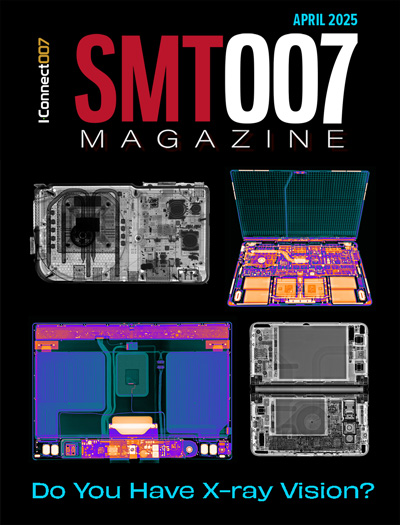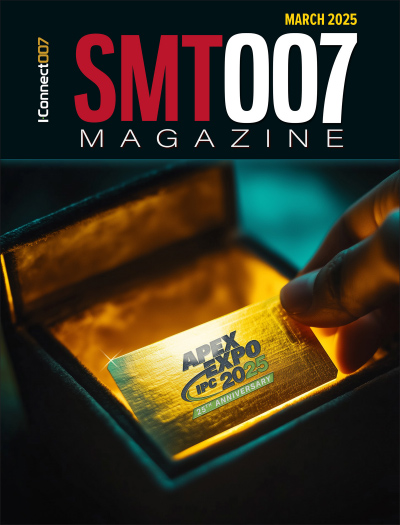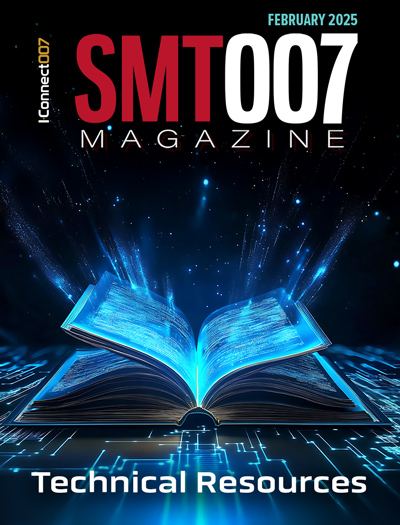-

- News
- Books
Featured Books
- smt007 Magazine
Latest Issues
Current Issue
Do You Have X-ray Vision?
Has X-ray’s time finally come in electronics manufacturing? Join us in this issue of SMT007 Magazine, where we answer this question and others to bring more efficiency to your bottom line.

IPC APEX EXPO 2025: A Preview
It’s that time again. If you’re going to Anaheim for IPC APEX EXPO 2025, we’ll see you there. In the meantime, consider this issue of SMT007 Magazine to be your golden ticket to planning the show.

Technical Resources
Key industry organizations–all with knowledge sharing as a part of their mission–share their technical repositories in this issue of SMT007 Magazine. Where can you find information critical to your work? Odds are, right here.
- Articles
- Columns
Search Console
- Links
- Media kit
||| MENU - smt007 Magazine
Don’t Overconstrain Your Board Materials
July 2, 2024 | I-Connect007 Editorial TeamEstimated reading time: 2 minutes
When we started planning this month’s issue, which centers on the use of traditional laminates in certain high-frequency PCBs, we knew we had to interview Kris Moyer and Ed Kelley together. Kris teaches advanced PCB design classes for IPC, and Ed is the former CTO of Isola and founder of Four Peaks Innovation.
What ensued was a wide-ranging discussion on the evolution of “standard” PCB laminates and the recent trend by some OEMs to use these materials in high-frequency and even RF boards. If you’re interested in avoiding the use of expensive, hard-to-manufacture specialty laminates for your high-frequency boards, you won’t want to miss this.
Andy Shaughnessy: Kris, in previous discussions, you said that some designers are now using standard materials for some high-speed designs, and even RF boards. Notice that I’m trying to avoid saying “FR-4.” What do designers need to know if they are designing a high-speed RF board and are considering using a standard laminate instead of laminates designed for higher speeds?
Kris Moyer: The two big things, whether you're coming from the engineering side or the designer side, are awareness of Dk (relative permittivity), and Df (dissipation factor). We talk about Dk and Df all the time in my classes. The classic FR-4 is not a genuine spec; FR-4 is just a flame-resistance rating for this flame-retardant material. But we are talking about epoxy resins and woven glass-reinforced bases, which is what everybody assumes they're getting when they say “FR-4.”
Historically, we would have Dk in that segment on the order of 4 to 4.5. The Df is on the order of 0.015. They are pretty lossy materials, which was fine for analog and in the early days of digital. But the formulations of the resins have continued to get better. We're now seeing epoxy-based resins that have a Dk down in the 3.2 to 3.3 range. Df is still not there yet, but it’s getting better. Even at a Dk of 3.5, an epoxy base doesn't have all the processing limitations of PTFE. There is a big segment of consumer-grade products that we don’t call RF, such as Wi-Fi, Bluetooth, and ZigBee. Those product lines are in the beginning, lower-frequency spectrum of RF, and we can absolutely use these FR-4 products to build those.
Now, if we're not trying to get super low loss, we still have to worry about insertion loss issues. If we don't have an insertion loss issue and we are just in the higher frequency range, then absolutely we can get the required performance out of the dielectrics in the more traditional epoxy-based resins. Another thing designers need to know about are the improvements in standard epoxy or acrylic or polyimide-based resins as we move on the spectrum toward full RF.
To read this entire article, which appeared in the May 2024 issue of Design007 Magazine, click here.
Suggested Items
ICT Spring Seminar: Nickel Not Welcome Here
03/12/2025 | Pete Starkey, I-Connect007After a miserable, dull, and damp English winter, a really pleasant nearly spring day with the sun shining and daffodils in bloom greeted delegates to the Institute of Circuit Technology Spring Seminar at Puckrup Hall near Tewkesbury, March 5, in Gloucestershire, UK.
Incheon National University Study Pioneers Breakthrough in Wireless Charging Technology
02/21/2025 | PRNewswireThe efficiency of wireless charging systems is limited by power loss occurring due to frequency changes in the resonant circuits that enable power transfer.
Kyocera Develops AI-powered 5G Virtualized Base Station for the Telecommunication Infrastructure Market
02/18/2025 | BUSINESS WIREKyocera Corporation announced that it has officially begun the full-scale development of an AI-powered 5G virtualized base station, with plans to commercialize the technology.
Kickstart 2025 With Advanced PCB Design Skills
12/17/2024 | Corey Lynn, IPCAs the new year approaches, it's the perfect time to set your professional goals and enhance your expertise in the dynamic field of electronics. IPC's January and February 2025 lineup offers a variety of courses designed to meet the needs of professionals at every level of their career, from beginners to seasoned experts. Whether you're looking to delve into the intricacies of radio frequency PCB design, tackle the challenges of military and aerospace applications, or start from the basics with our introductory courses, there's something for everyone. Enroll today and take the next step toward mastering your craft in the electronics industry.
TTM Technologies Introduces Innovative Radio Frequency Components for Telecom Band n104 to Enhance 5.5G Applications
12/12/2024 | Globe NewswireTTM Technologies, Inc. has expanded its Radio Frequency and Specialty Components (RF&S) product offering by releasing a family of components supporting telecom band n104, an emerging band extension for 5.5G applications.


